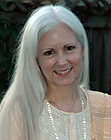
Ayurveda
Dravyaguna – Ayurveda and Herbs

In Ayurveda, the science of therapeutic substances, including herbs, is called Dravyaguna meaning the “attributes of substances.” Dravyaguna gives us extensive classifications concerning the unique properties and use of herbs, based on the herb’s taste and actions. The term Dravyaguna is used in Ayurveda to describe the energetic classification and understanding of herbs, as it is focuses on the expression of consciousness through the herb’s apparent attributes.
The principal characteristic of the universe is consciousness, which leads to its manifest form, prana. Ayurveda teaches that every therapeutic substance found in nature reveals the conscious intelligence of the universe as expressed by prana. It follows that every herb has in its design the ability to awaken and harmonize our consciousness with the consciousness of the substance. When there is disruption of prana, the intelligence of the prana in the substance will create balance.
Ayurveda offers us a brilliant system to understand and use herbs and other natural substances to regain and maintain balance. By increasing the intelligence of our body and mind, through the intelligence inherent in the plant, we experience proper function and harmony. The intelligent function of the body is regulated by the three Doshas. Assisting doshic function is the primary purpose of Dravyaguna. Through the classification of the dravya’s gunas, we are able to make the appropriate choice of herbs for doshic balance.
One aspect of herbal use in Ayurveda that sets it apart from western herbology is that Ayurvedic herbology is part of a complete system of healing. The use of herbs in Ayurveda begins by understanding the unique doshic circumstances that have led to the cause of a present disturbance. From this basis, Ayurveda offers a process of selecting herbs for doshic balance, along with additional support for the tissues or systems involved in the symptom of disorder or disease.
Any system that does not look at the whole person (body and mind) and the root cause of an imbalance is practicing with a symptomatic approach. To address the symptom without regard to the cause or unique circumstances, at best will give temporary relief of the symptom and worst case is that the remedy will create a new imbalance.
Ayurveda explains that herbs have active and supportive chemicals that are designed by nature to be experienced in combination with each other, yet modern science has extracted and analyzed the healing components of many botanicals. Rather than using a whole herb, modern pharmacologists identify, isolate, extract, and synthesize individual components, thus capturing the active properties.
Ayurvedic herbalists know that when we isolate one part of an herb we effectively destroy its inherent intelligence and greatest potential. The isolated component is missing the intact herb’s consciousness, leaving it ineffective in terms of pranic function. Since the isolated compound cannot be recognized by the intelligence of the body, it will be considered an intruder and the body will resist it, rendering it ineffective, or reject it, in which case it becomes a toxin.
According to Ayurveda, the proper use of herbs will balance doshas, vitalize dhatus (tissues), clear srotamsi (channels), kindle agni (digestive fire) and arouse consciousness. Herbs are representatives of the cosmos, receiving and transmitting life giving prana. Using herbs as they were designed by nature, and with conscious selection, assures that we will receive the benefit of their gifts.
Disclaimer: This article was written for educational purposes only and is based on the tradition of Ayurveda. It is not intended to treat, diagnose, prescribe or heal any health condition or to replace standard medical treatment or advice.
Denise O’Dunn, president and founder of Balance & Bliss Inc., is a certified Ayurvedic Practitioner, Licensed Massage Therapist (ma58502) and yoga teacher. She received her degree in Ayurveda from the Florida Vedic College and is a professional member of the National Ayurvedic Medical Association. She can be reached at [email protected] or visit www.balanceandbliss.com